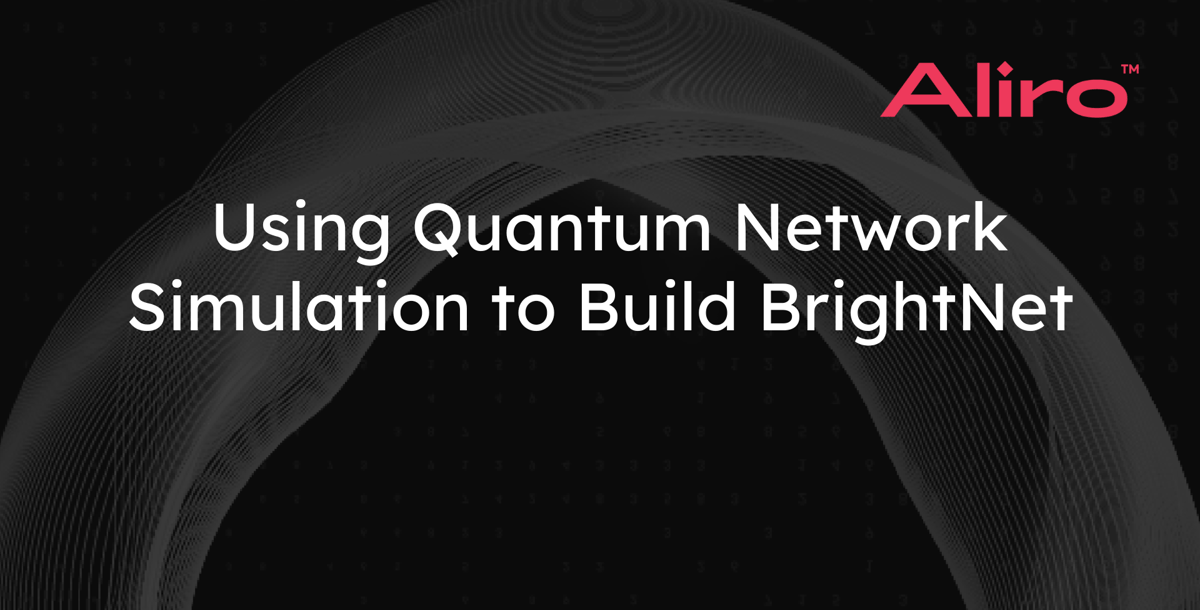
Quantum networks are not a theoretical technology. At Aliro, we turned theory into practice by building BrightNet, our in-house quantum secure communication network testbed. Even before a single photon was emitted, the journey began in a digital environment: Aliro Simulator.
Quantum networks operate differently from classical networks. Instead of managing bits across the network, quantum networks manage quantum states, distribute entanglement, and maintain strict timing and synchronization. Building a quantum network via manual trial-and-error is too costly and time-consuming. Instead, using a theory-validated quantum network simulator can enable the network to be designed and built with much less risk and much more confidence.
Before deploying our own quantum communications network, BrightNet, we relied on theoretical modeling and Aliro Simulator to design, validate, and optimize the network. This approach allowed us to:
- Emulate hardware configurations to evaluate how different hardware components would behave under real conditions.
- Optimize network topologies and protocols for high key generation rates.
- Test scenarios to ensure interoperability and compatibility.
The Aliro Simulator framework has two distinct pieces: a Python simulation framework and a scalable, swappable backend.

In the Python simulation framework, a comprehensive API ties together 3 quantum networking simulation inputs:
- Quantum network hardware components.
- Noise modeling.
- Quantum network protocols.
Inside the Python portion of Aliro’s framework is the Quantum Network Components & Noise Modeling Library. This is where each device’s profile is collected, turning hardware data sheets and fiber characterizations into a digital model of the physical layer components.
Also in this part of the framework are the Quantum Networking Protocols. On top of the physics, the simulator runs the protocol logic Alice and Bob need: basis selection, sifting, error correction (with chosen efficiency), and privacy amplification. This allows for testing whether the whole BBM92 protocol workflow will meet your use case targets, such as coincidence rate, QBER, and secure key rate.
These capabilities support the user experience of setting up, running, and visualizing designs:
- Describing devices and fibers.
- Composing links and networks with precise parameters.
- Collecting and aggregating results.
- Visualizing coincidences, QBER, and secret key rate vs. distance or time, and many other performance metrics.
- Exporting configs to digital twin emulators and orchestration layers.
This part of the framework predicts how the components of the network will work together based on real-world parameters, before any hardware purchases are made.
The other part of this backend is the Quantum Simulation. This part of the simulation framework evolves the entangled state through realistic fiber and optics, accounting for the relevant impacts from hardware, environmental factors, and fiber characteristics. The goal here is to predict how a quantum state degrades on a real link, and what that implies for visibility, QBER, and the secure key rate.
As part of the scalable and swappable backend, you can choose how to represent quantum states (state vector, density matrix, or stabilizer) and swap between simulators like Cirq, QuTiP, or QSim. This plug-and-play design keeps the platform flexible for different tasks and allows it to scale in the cloud with parallel runs and optional GPU acceleration.
Using Aliro Simulator, we were able to mirror the real-world constraints and hardware components we intended to use at Aliro HQ. The simulator helped us understand how photon loss, hardware imperfections, and environmental noise would affect performance. Aliro Simulator also allowed us to model the complete stack, from quantum optics at the physical layer to key management at the application layer.
Simulation is also essential for ongoing operations. A quantum network’s performance could be continuously benchmarked against simulated models. If anomalies arise, a quantum network simulator can be used to help diagnose issues and test solutions virtually, ensuring that the problem is solved at the cause.
For a more detailed explanation of how BrightNet was built and tested with Aliro Simulator, please see the on-demand webinar, Behind the Scenes: Building a BBM92 Network. https://www.brighttalk.com/webcast/19861/647939
